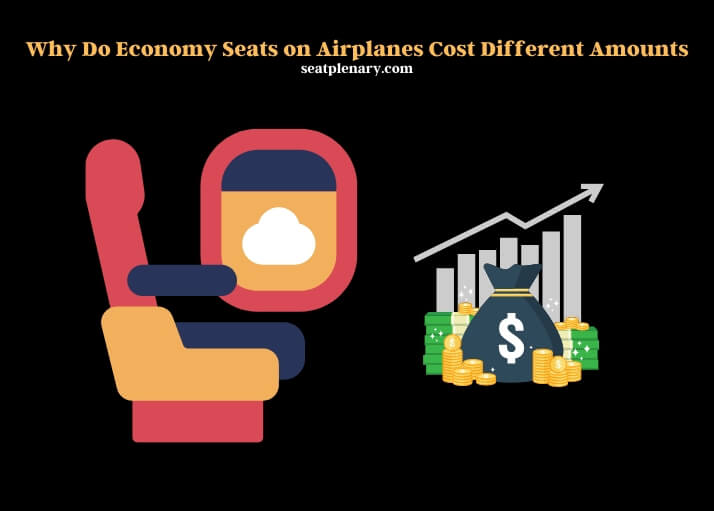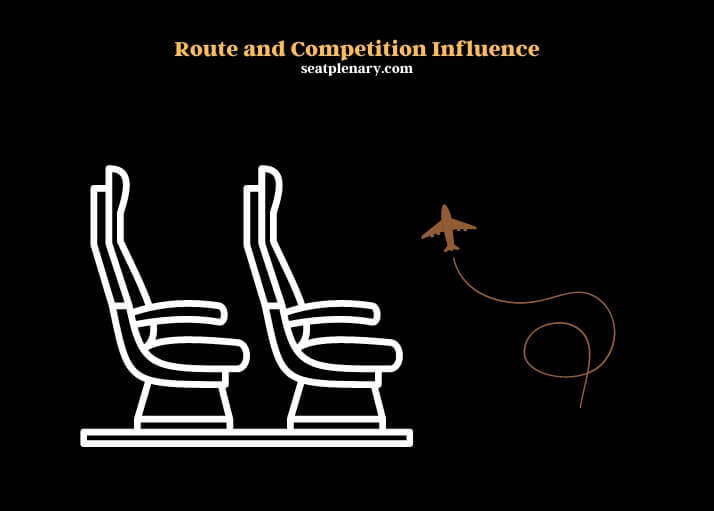The cost of economy seats on airplanes varies due to a combination of factors including demand, booking time, and airline pricing strategies. These elements work together to determine the final price a passenger pays.
Airline tickets, especially in the economy class, are subject to a dynamic pricing model that takes into account the popularity of the route, the time of booking relative to the flight date, and the level of competition among airlines on the same route. For instance, flights to tourist hotspots during peak travel seasons like holidays and summer months often see a surge in prices due to increased demand.
Conversely, less popular routes or off-peak travel times may offer more affordable options as airlines aim to fill seats.
Airlines’ use of advanced algorithms to adjust prices in real-time means that fares can fluctuate based on how quickly seats are selling and changes in market conditions. The introduction of ancillary fees for baggage, seat selection, and onboard amenities also contributes to the overall cost of flying, allowing airlines to offer a base fare that appears lower while giving passengers the flexibility to pay for only the extras they value. This pricing complexity ensures that even within the same cabin class, passengers may pay different amounts for a seat on the same flight.

Demand and Supply Dynamics
The cost of economy seats on airplanes is significantly influenced by the basic economic principles of demand and supply. During peak travel seasons, such as holidays and summer months, the demand for seats increases. Airlines, capitalizing on this demand, often raise their prices.
Conversely, during off-peak times when fewer people are traveling, prices may drop to attract more customers. The availability of seats on a particular flight also plays a crucial role. Flights nearing full capacity tend to have higher priced seats, while those with many available seats may see a reduction in price to encourage bookings.
Airlines continuously monitor these factors, adjusting prices to maximize profitability while ensuring flights operate at optimal capacity.
Airline Pricing Strategies
Airlines employ sophisticated pricing strategies to determine the cost of economy seats. Dynamic pricing allows airlines to adjust fares in real time based on changing conditions such as demand, booking patterns, and competitor pricing. Segmentation and yield management are also key strategies.
Airlines segment the market, offering different prices to different customer groups, and practice yield management by selling seats at various price points to maximize revenue. This approach results in passengers on the same flight paying different amounts for their seats based on when and how they book.
Impact of Dynamic Pricing on Seat Costs
| Booking Advance (weeks) | Average Price Increase (%) |
| 12 | 20% |
| 8 | 15% |
| 4 | 30% |
| 1 | 50% |
Timing’s Impact on Booking
The timing of a booking can greatly affect the cost of economy seats. Early bird discounts reward passengers who book well in advance, while last-minute deals may be offered to fill seats.
These last-minute deals are not always guaranteed and often depend on the flight’s booking status and demand forecasts. Booking on weekdays can sometimes result in lower prices compared to weekends, as airlines adjust their pricing based on the historical booking trends of their customers.
Booking Timing and Price Variation
| Booking Period | Average Price Variation |
| More than 3 months ahead | -15% |
| 1 to 3 months ahead | -5% |
| Less than 1 month ahead | +10% |
| Last-minute bookings | +20% |
Route and Competition Influence
The choice of flight route and the level of competition among airlines serving that route significantly impact economy seat pricing. Routes with higher demand or those considered premium can command higher prices. The presence of low-cost carriers on a route often leads to lower prices across all airlines due to the competitive pressure.
This section includes a comparison of economy seat prices across various routes, highlighting the impact of competition and route popularity.

Ancillary Fees’ Role
The base cost of an economy seat is often just the beginning. Ancillary fees for services like checked baggage, seat selection, and in-flight meals can significantly increase the total cost of flying. These fees vary widely among airlines, with some offering all-inclusive fares and others charging for every additional service.
A comparison of ancillary fees across different airlines reveals the diverse strategies airlines use to generate revenue beyond the ticket sale.
Comparison of Ancillary Fees by Airline
| Airline | Baggage Fee | Seat Selection Fee | Meal Option |
| Delta Air Lines | $30 | $15 | $20 |
| United Airlines | Free | $10 | $25 |
| Low-cost C | $20 | $5 | Not offered |
FAQs
Fuel Surcharges and Their Impact
Fuel costs are a significant factor in airline operations, and fluctuations in oil prices directly affect ticket prices. Airlines often include fuel surcharges in the ticket price, which can vary depending on the current price of oil. As fuel prices increase, airlines may raise surcharges to maintain their profit margins, leading to higher costs for economy seats.
Conversely, if fuel prices drop, passengers might not see an immediate decrease in ticket prices due to airlines’ strategies to hedge fuel costs. This practice ensures airlines can manage financial risks associated with volatile fuel prices but also results in varying economy seat costs.
Airline Alliances and Pricing
Being part of an airline alliance can influence the pricing of economy seats. Alliances allow airlines to offer a more extensive network of destinations through code-sharing agreements. This collaboration can lead to standardized pricing models across allied airlines for similar routes.
Differences in operational costs, service levels, and market demand among alliance members can cause variations in seat prices. Passengers might find discrepancies in economy seat costs for the same destination, depending on which airline within the alliance they choose, reflecting the complex nature of airline pricing strategies within these partnerships.
Aircraft Type and Seat Configuration
The type of aircraft and its seat configuration plays a crucial role in determining the cost of economy seats. Airlines operating newer or more fuel-efficient aircraft might offer lower prices due to reduced operational costs.
The layout and density of seating can affect ticket prices. Flights with higher seat density typically have lower costs per seat, allowing airlines to offer more competitive pricing.
This can also lead to a trade-off between comfort and cost, with some passengers willing to pay more for slightly better amenities or extra legroom in the same economy class.
Loyalty Programs and Fare Discounts
Airlines’ loyalty programs often influence the pricing of economy seats. Frequent flyers accumulating miles or points might have access to discounted fares, upgrades, or other benefits that affect their ticket costs. These programs are designed to encourage repeat business by offering better deals to loyal customers.
The availability of these discounts and the criteria for accessing them can result in different passengers paying varying amounts for the same economy seat, depending on their status within the airline’s loyalty program.
Government Taxes and Airport Fees
Government-imposed taxes and airport fees are a significant component of the total cost of airline tickets. These charges vary widely from one country to another and even between airports within the same country. Taxes and fees can include security charges, passenger service charges, and environmental taxes, all of which are passed on to the passenger.
The variability in these external costs can lead to differences in economy seat prices on international routes, where taxes and fees can constitute a larger portion of the ticket price.
Sales Channels and Booking Fees
The channel through which a ticket is purchased can also affect the cost of economy seats. Booking directly through an airline’s website might offer the lowest price, while purchasing through third-party travel agencies or online travel agents could include additional booking fees.
Airlines sometimes offer exclusive deals or discounts on their websites or to their email subscribers, which are not available through other sales channels. This variation in sales channels and the associated costs can lead to differences in the final price paid for an economy seat.
Summary
The pricing of economy seats on airplanes is a complex interplay of demand and supply, airline pricing strategies, booking timing, flight routes, competition, and ancillary fees.
These factors can help travelers make more informed decisions and potentially find better deals on their flights. The variability in seat costs underscores the importance of strategic booking and the need to consider the total cost of travel, including all ancillary fees.
